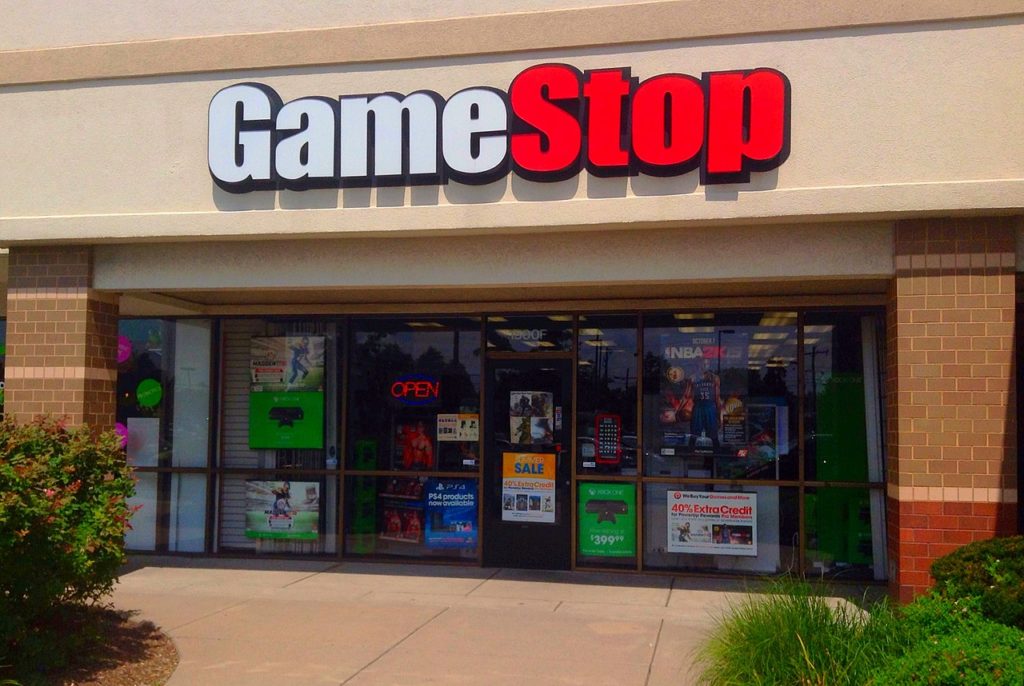

Date: 2/01/2021
Author: Kent Moors, Ph.D.
When I was young in the 1950s, Saturday morning television was much different. Then, it included Jungle Jim, (with Johnny Weissmuller hacking through the underbrush trying to make it back to being Tarzan), Captain Gallant of the Foreign Legion (starring Buster Crabbe in one of the first big budget series shot on location [in Morocco]; Crabbe had hit the comic strip trifecta in 1930s cinema by playing an earlier version of Tarzan along with his more famous roles as Buck Rogers and Flash Gordon), Andy’s Gang (brought to you by Buster Brown Shoes and hosted by the great raspy voiced character actor Andy Devine, who also played sidekick Jingles in The Adventures of Wild Bill Hickok; Devine has his own sidekick on Gang – a magical frog that could disappear; once each episode Devine would utter a famous line that probably would not pass the censors these days – “Pluck you magic twanger, Froggy”); Sky King (an Arizona rancher named Schuyler King with a cool airplane and a pretty niece); and Annie Oakley.
Now Weissmuller and Crabbe are still part of my current life. As handsome and popular Olympic gold medal winners who turned actors, they remain central founding figures in the Swimming Hall of Fame I pass several times each week here in my adopted home of Fort Lauderdale.
But Annie Oakley is what I am thinking about today. It starred Gail Davis and, aside from the TV character being a sharpshooter, it had no bearing at all to the historical western figure. However, each episode would include a moral quandary. At some point, Davis would turn to the camera and tell all us kids that “Two wrongs don’t make a right.”
This past week in the markets brought back my childhood. Two wrongs don’t make a right. But this compounded wrong will end up costing a lot of amateur investors a lot of money.
We have experienced a unique retail onslaught. Starting with (and still centering on) GameStop (GME), individual small investors used a discussion forum to take after large runners of shorts on several weak stocks. The result was a classic short squeeze and huge rises in the value of GME and other targeted shares.
Here is how this unfolded.
Posters on WallStreetBets, a Reddit discussion forum, started a mass movement to buy GME shares. The idea was simple. GME had experienced heavy short action, driving down the price of the stock.
However, the one concern when shorting is that the stock will start increasing in value. That squeezes the short players, requiring them to “cover” their shorts by going back into the market, buying back the shorted shares, which, in turn, accelerates the price rise.
The WallStreetBets approach was simple. Bring in enough buy volume to drive the short holders into a massive squeeze, significantly increasing the share price.
A short is a bet that a stock will decline in value. The player borrows shares from a broker, immediately sells them, returns to the market later to buy back the shares, and then returns them to the source. If correct, the investor makes money on the difference.
Take the following example. You believe stock ABC will decline in value. It is currently trading at $10 a share. So, you borrow it from a broker and sell it, realizing the $10. Later ABC declines to $8. You go back into the market, buy it back, and return it to the broker. You pocket a $2 profit (minus whatever fee you paid for the original borrowing of shares).
If, however, you have guessed the direction of the stock price incorrectly, you are in trouble. Because you still must go back into the market and rebuy the shares to return them. If ABC does not decline but instead rises from the $10 received initially to $20, you have a 100 percent loss. If it has risen higher you may be looking at a nasty margin call.
You need to buy the shares and return as soon as possible to minimize the loss. This is known as a “short squeeze” and will always further increase the price of the stock.
Theoretically, there is no limit to how much money can be lost by shorting. This is the reason I never recommend it to any of my service subscribers. Essentially it is an attempt to profit by introducing an artificial element into the trading of stock. That becomes the first wrong.
Well, GME was heavily shorted, a situation also faced by AMC Entertainment Holdings (AMC) and a few others priced low enough to entice a move. At one point, GME had more shorts than available shares for trade. This occurs when short artists employ the riskiest tactic there is – running naked shorts. Here, the investor does not actually own the shares being sold to the market for the initial “gain.” A rapid increase in share price then results in a “double whammy.”
Those who heavily shorted GME and AMC were looking at each stock’s fundamentals. Both companies were weak and getting weaker. In short (no pun intended), they were ripe for a move.
A single investor could try to play this by going long, that is, buying the shares, and hoping the trend reverses. On the other hand, if a large number of investors moved in to buy a shorted stock, an artificial squeeze results. That is what happened here and was the “second wrong.”
The counter move took hold fast. WallStreetBets reached 3.9 million members, more than tripling its participants, in less than a week. The buying deluge was on.
GME closed at $17.25 on January 4 and at $17.69 on January 8. It reached $76.79 at close on January 25; and $347.51 on January 27. That’s a 352.5 percent gain in two trading sessions, 1,014.6 percent in less than a month. After a major decline on Thursday, it shot right up again on Friday (as a second wave of desperate novices piled on board).


AMC has had a similar ride. Another heavily shorted stock, it closed at $2.01 on January 4 and $2.14 on January 8. It reached $4.42 on January 25 and $19.90 at close on January 27. That translated into a 450.2 percent rise in two days, 890 percent in less than a month. Once again, after retreating on Thursday, the AMC price short back up on Friday.
The rollercoaster was accentuated by Robinhood and other trading platforms popular with the new less experienced investor deciding to close trading access to both stocks, eliciting anger by some small guys now prevented from getting in and those already in unable to bank profits.
The situation will simply get worse from here.
First, those piling on late in the process are almost guaranteed a loss. They will be buying GME and AMC at unsustainably high prices.
Second, large volumes of transactions in one direction often cannot be balanced. This was the reason for trading platforms suspending access to the stocks. For a trade to occur one action (buy or sell) needs to have a corresponding counter party. Those pairings were not available and clearing houses could not process the trades.
Of course, some went on forums like WallStreetBets and charged that the Robinhoods of the world were in collusion with the institutional investors and hedge funds (those moving the large shorts) against the little folks. That was certainly not the case.
Forget that now the main longer players are rather large themselves. They are in the game for the few day spike in price and then will get out. If this becomes a cyclical thing, expect these guys to move very quickly in and out as often as the pricing divergence creates a profit spread. In any event, the small investor will take it on the chin.
Third, the main short players are not going anywhere. Despite having lost over $100 billion on the squeeze in only a few days, the big money is staying put. They are banking that those individual investors who can get trades cleared will be selling to cream off gains. That will simply suppress the stock values and bring shorts back into profitability.
To be clear, I have opposed shorting stocks (and futures contracts in commodities like crude oil) in my writings for at least fifteen years. The argument in favor of shorting has come and gone, some time ago actually. This position has maintained shorts as necessary to add liquidity to the market, an argument strikingly similar to one made by those defending a whole range of otherwise suspect derivatives.
There are now other ways to add liquidity that have nothing do so with shorting stocks, including a wide number of new exchange traded funds and notes as well as an expanding options market. These are far outweighing the “advantage” to trading provided by shorts.
Shorts are now nothing more than an artificial play against other traders, not the stock itself, intending to put an outside thumb on one side of the trading scales.
The WallStreetBets crowd are attempting to accomplish the same objective by putting a collective thumb down on the other side of the scales. It is as artificial as the shorts against which they are moving.
Two quite important further points to keep in mind here.
First, the WallStreetBets profits can be maintained only by pushing a Ponzi scheme. It is a con for the vast majority of investors entrapped by it. Large amounts of additional money must continue to come in on the long side, or this house of cards collapses. That requires new over shorted targets be found and gullible small investors enticed. Those late to the party will simply subsidize those who were first in the door, thereby keeping the con afloat.
Second, this is illegal. It is market manipulation no different than inside trading or large private institutions comparing their moves in advance to restrain trade. When the smoke clears, the WallStreetBets bloggers orchestrating this version of populistic David beats Goliath fiction better have some good lawyers.
Nonetheless, this mess has provided a ready way to profit. Using puts (options that increase in value as the underlying stock declines) on stocks targeted by the anti-short movement is now in vogue. I have already moved my Sigma Trader subscribers into these positions.
Some of these are expensive but keep two observations in mind. Move the puts further down the curve (to March, April, or even beyond) allowing some time for this to work itself forward. Second, move on strike prices well Out of The Money (OTM), thereby reducing your cost. Let the inevitable collapse in stock prices come down to where you have already established a position.


Dr. Kent Moors
This is an installment of Classified Intelligence Brief, your guide to what’s really happening behind the headlines… and how to profit from it.
Dr. Kent Moors served the United States for 30 years as one of the most highly decorated intelligence operatives alive today (including THREE Presidential commendations). After moving through the inner circles of royalty, oligarchs, billionaires, and the uber-rich, he discovered some of the most important secrets regarding finance, geo-politics, and business. As a result, he built one of the most impressive rolodexes in the world. His insights and network of contacts took him from a Vietnam veteran to becoming one of the globe’s most sought after consultants, with clients including six of the largest energy companies and the United States government.
Now, Dr. Moors is sharing his proprietary research every week… knowledge filtered through his decades as an internationally recognized professor and scholar, intelligence operative, business consultant, investor, and geo-political “troubleshooter.”
This publication is designed to give you an insider’s view of what is really happening on the geo-political stage. You can sign up for FREE to Classified Intelligence Brief and begin receiving insights from Dr. Moors and his team immediately.
Just click here – https://classifiedintelligencebrief.com/






